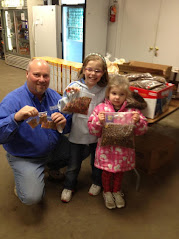My experiences making visits
by Chris Walker evangelism coach
But when I reflect on my experiences as a first time church visitor, it makes perfect sense.
When I am a first time visitor I am focused on the mechanics of getting to the sanctuary, getting a seat, and getting oriented to my surroundings. The services of greeters and location of signs are helpful in accomplishing that task. A task oriented mentality narrows the focus to accomplishing the task, not to evaluating the friendliness of a congregation. The more helpful the congregation is in getting that task done (greeters, ushers, signs) the easier I can get it checked off the list.
However, the 10 minutes after the service is where I am now relaxed, ready to engage people, having heard a message, prayed, sang some songs. I grab a cup of coffee and am now ready to talk with people about what I just experienced.
This is where the level of friendliness comes to clear view:
Is any one approaching me as a the first time visitor?
Does any one want to talk with me?
Steps to improve your church hospitality after worship
In How to welcome Church Visitors, a whole chapter is devoted to these important ten minutes, including how to talk with visitors after the service. It’s not the time to conduct church business with insiders. It’s time to talk with visitors.The research shows that those 10 minutes after the service are the perfect time to take initiative and talk with your guests. You could:
- Introduce yourself: “I’ve not met you yet, I’m Chris . . . . “
- Offer to pray with them right then if a need is shared.
- Offer to answer questions they might have about their experience.
You can read more at the book How to welcome Church Visitors










